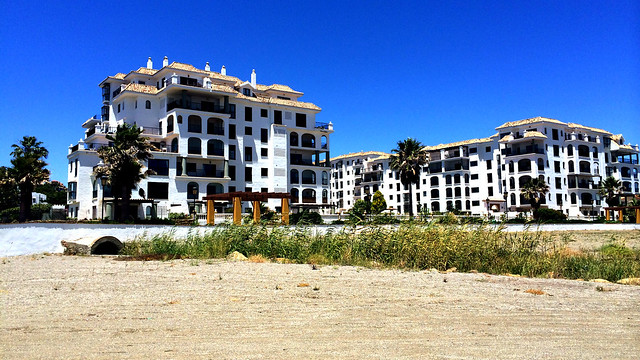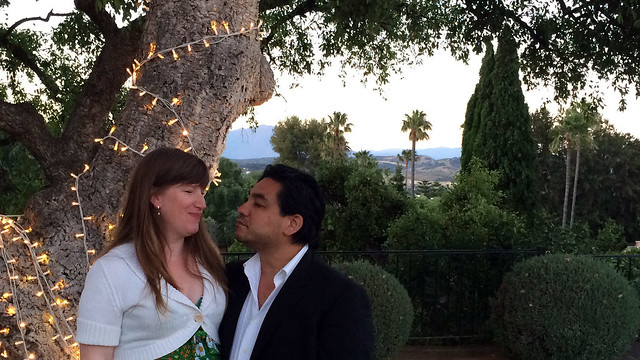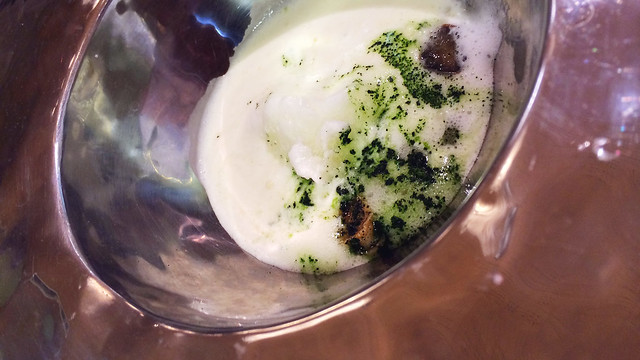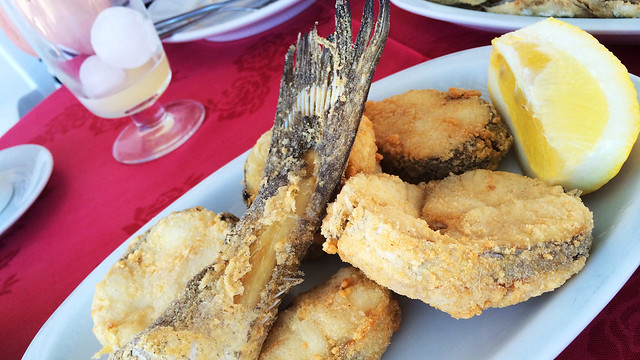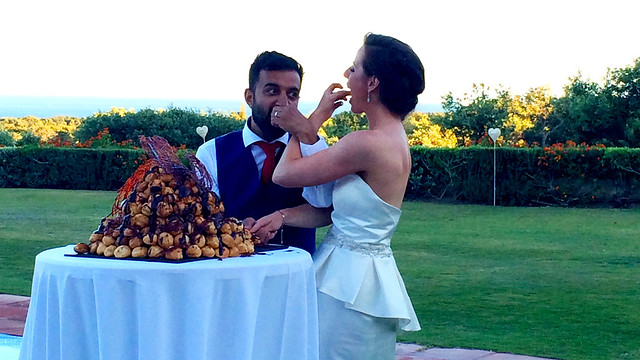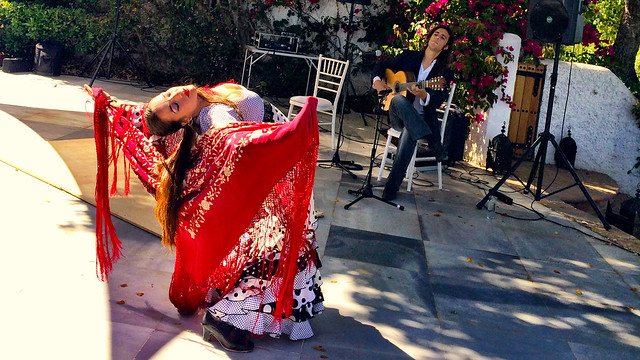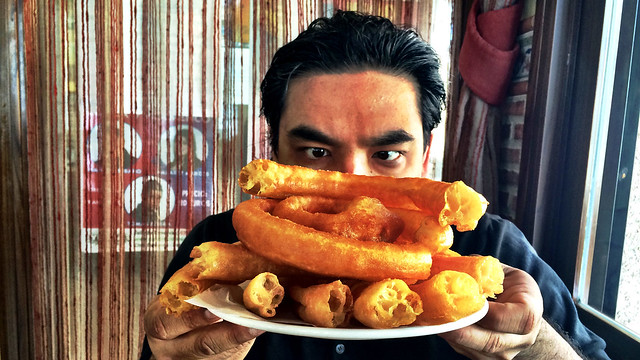I was last in Japan just over seven years ago, which is long enough that the photos and videos look insanely lo-res and that my writing feels almost embarrassingly worse and even more egocentric than it is now. Vis-a-vis my ramblings of late 2007, I find that not much has changed: Japan is still surprisingly affordable, public internet access sucks (though renting a "pocket wi-fi" device changes all that), Roppongi is still a Yankee-magnet douchehole, and everything is so. Ridiculously. Clean.
Of course, I have changed. I'm married. I'm a father. I've traded in San Francisco for Paris as a home base. And while I still have a day job at a software multinational, I'm less focused on the leisure such a stable job would afford me, and more so on spending my money and waking hours turning me and my wife's restaurant business into a proper venture that will support our family and our future. So you might say I've grown up a bit... But my adoration of Japan remains both childlike and rooted in childhood.
We spent a good chunk of my early childhood in Japan. In addition to spending time with the Japanese side of my family in Kochi, my Iranian grandfather owned property in Tokyo where my father did a lot of business. We lived there part time, just south of the Imperial Palace grounds and not far from my now-not-so-beloved Roppongi. When the house wasn't available, we would stay at the Okura Hotel, practically next door. And as the parallels have been drawn before, it was like having our own Grand Budapest Hotel. Yeah, childhood was perhaps a bit idyllic in the Tavallai household.
Me in the bath, Okura Hotel
Today our old place - an old, now quaint looking three-story building dwarfed by skyscrapers - is set to be torn down to make room for yet another "xxxx Hills" complex like Roppongi Hills or Ark Hills or whatnot. And despite all efforts to save it, the main building of the Okura Hotel is being demolished later this year to make way for an updated version housed in a 38-story steel and glass beast that checks all the boxes of modern luxury hotel needs.
With a daughter of the same age as I was in the photo above (and a 1-in-60-thousand spot at an insanely coveted dining destination), it was imperative, then, that we go to Tokyo and savor what would for me be the last vestiges of my earliest years and for my wife and daughter the first and last chance to get a glimpse of my past. And though we'd been on vacation in the States only a couple of weeks before, I needed a vacation after my vacation.
I'd had a bit of an existentialist crisis on Christmas Eve while looking out over the Palouse in eastern Washington, taking in unobstructed moonlight reflecting off the snowy expanse visible from my in-laws living room. It was serene, it wasn't Paris, and I was happy, the faint din of family sleeping in the adjacent rooms. Enjoying this peace, I was tempted to pack it all in. Quit the job. Reboot the business. And maybe even move back to the States. I'd been in a rut, I was feeling directionless, and I needed to be inspired again. With this trip to Japan coming up, I'd placed my hopes in travel's restorative power, its power to inspire, and its power to motivate.
If this all sounds very self-indulgent, well… that's because it fucking is.
Being that I had miles to use up on Virgin Atlantic, we made our way to London via Eurostar, which is much nicer and only a little bit longer than the RER B commuter train to Paris Charles de Gaulle airport, sadly enough. There was an ungodly delay thanks to a fire in the Eurotunnel the day before, so we had minimal time with our friend Carla in London. But it was still better than riding the RER. Throw in a 15-minute jaunt on the Heathrow Express in the morning and, as the locals say, "Bob's your uncle."
Virgin Atlantic VS900 & 901
We had inadvertently booked ourselves on what would be among the very last flights operated by Virgin between London Heathrow and Tokyo Narita airports, and after experiencing the amazing service and exceptional flight crew, I already miss it dearly.
Arrival in Tokyo was pretty much effortless, and despite some oddball ticket pricing schemes to figure out, we were on the Narita Express train into Tokyo in less than 40 minutes after landing. My jetlag and sleep deprivation, however, couldn't suppress my anger and befuddlement that to this day there is no direct express train between Paris and its airports. Fix your shit, France.
A jet-lagged Friday
It was morning, so we had to have breakfast. The natural instinct in Tokyo, even in the morning, is to gravitate to rice. And fish. Naturally, with Tokyo Station being within spitting distance of the Tsukiji fish market, we had an over-the-top sushi breakfast, at a "standing sushi bar" (i.e. there are no seats), for approximately $.75 - $2.00 per piece. Having eaten nearly twice as much sushi as we had originally intended, we walked out with a $35 bill. Yet it was still the best sushi I'd had in, oh, 7 years, particularly due to the sheer novelty of fish that we simply do not get in France.
We then walked over to Tsukiji proper, explored the market a little, and settled in for coffee at Turret, one of the gazillion specialty coffee joints on our list to check out. In our life as cooks, we've worked with most of the specialty coffee places in Paris at one point or another, so it's always fascinating to go to another country and see how it's done. Tokyo's scene is certainly more mature than Paris', but other than a more fetishistic focus on craft, most places seem to offer the same formula of one or two baristas presiding over a narrow counter with a handful of local variants on American-style baked goods in small but pristine surroundings. Not unlike your typical Parisian third-wave specialty coffee joint. If I were looking for any exoticism in the coffee scene, we were not to find it here. (For those looking for a more singular coffee experience in Tokyo, check out ridicu-snobby Bear Pond and mega-retro Café de l'Ambre.)
The barista/owner at Turret was kind enough to let us hang out and charge our phones and feed our daughter and half-fall asleep while figuring out just how our jetlagged asses were going to bide the time 'til we had to meet up with our AirBnB hostess in the early evening, which we did by scouting out more coffee, buying high-end custom-polished rice in Ginza, and exploring the nooks and crannies of Tokyo Station. We learned that you can breastfeed pretty much anywhere, that the family bathrooms and diaper changing facilities around Tokyo are nothing short of amazing, and that having a kawaiiiii seven month-old strapped to you is like being a Hollywood celebrity: Everyone wants a photo.
Hot damn, have my priorities changed.
Tackling evening rush hour to bustling Akasaka was actually pretty easy. The insane Tokyo subway commute you see on TV only applies to the morning, when everyone goes to work at the same time. Evenings are more lax, as departure times are more distributed, with half of Tokyo salarymen sticking around near work to get various degrees of hammered through the evening. We made it to our tiny apartment unscathed, settled in, and met up with our friend Vaughn for some low-key dinner and sake in a less touristed part of Tokyo.
Sake and just a little bit of food.
Part of our motivation to come to Tokyo was, in addition to getting some inspiration, to get a feel for how other small actors with limited resources were doing it. In much of Tokyo, space, staffing, and regulations are as excruciatingly challenging as in Paris. Yet time and time again, we see Japanese businesses that are flawlessly executed and overwhelmingly amazing in terms of service and quality, a far cry from their Parisian counterparts, and I knew we could learn from them.
Tsuru-ni Tachibana was one of these. There's but one man running the show - cooking, cleaning, and serving for fourteen covers, and it's all excellent. Both elegantly refined and comfortably humble at the same time, this is quite possibly the best sub-$40 meal (including drinks) anywhere. Somehow capturing the immersive sensorial luxury of a Kyoto kaiseki meal and the value-for-money efficacy of a Paris bistronomie menu, the food and atmosphere are both highly traditional but loose and playful. I felt like any of these dishes could have been made by my mom or by a grand chef, without being the least bit paradoxical. It's the sweet spot. Restaurant perfection. This is what I want to eat. This is what I want to do. This is what I wish others would aspire to be.
So it may seem back-assward that this also became the most nerve-wracking meal I've had in memory. The fifth dish that the chef/owner/barman/waiter/plongeur brought out (in the center of the photo collage above) was a distinctly white sashimi served with a seasoned citrus coulis. My sphincter immediately tightened up and a shudder ran from my lower back down through my legs.
"Fugu. Not dangerous. Please enjoy," said the chef/owner/barman/waiter/plongeur as he set down the plates and walked away.
The last time I was in Japan, I ate whole sparrows and locusts and raw horse in Nagano. I ate all manner of slimy things cooked, raw, and parboiled. I ate fish head-on, guts-in, and in every way it was presented to me. I conquered whatever remaining food aversions I had in my life. My prior "big trip" had been to Australia and New Zealand where I got over my fears of open water and heights by scuba diving and bungee jumping, respectively.
However, I'd promised Alannah last time that I wouldn't try fugu – at least not without her there to die with me – and more recently I promised Alannah's father that I wouldn't make her eat fugu on this trip. I generally try (and sometimes fail) to be a man of my word, but beyond that, I was looking at my daughter snuggled up in the Baby Björn thinking, "…and I'm a dad now."
Realistically, no one in the modern era has died by eating fugu at a restaurant. Its preparation is very tightly controlled, and the only recorded deaths have been through untrained amateurs making the fish for themselves, sometimes unknowingly. But still – it's a very sudden, very painful death, one too quick for any sort of antidote. Vaughn picked up a slice and popped it in his mouth, laughing at the slight tingling sensation on the tongue. "I guess if you don't die in the next thirty seconds, we're good to go." Vaughn didn't die, so Alannah picked up a slice. I had promised her father that I wouldn't make her eat fugu - she grabbed it voluntarily! Anyway, she didn't die, either. So I had a piece and psychosomatically started to sweat and tense up and… obviously I didn't die. And despite the fact that the fish has almost no flavor whatsoever, it was pretty damn amazing, owing to the indescribably unique texture. And the brilliant seasoning.
(Un)fortunately, Alannah couldn't have more than one piece due to the fact that she's nursing, so Vaughn and I split up her plate and ate the rest with gusto, with me thoroughly embarrassed at being so freaked out only minutes before. I thought that was the death-defying closing act for dinner, but the dishes kept coming, and while none reached the drama of the once-poisonous blowfish, the flavors kept on winding their way through the winter season, ticking off almost every ingredient on the "what should we eat in Japan right now" checklist.
Despite their unerring efficiency, trains stop running around midnight, so as dinner ended we had to have an extra-quick round of "hold and take photos with the kawaii baby" with our fellow diners and the chef before catching the last train to Akasaka. But even the lengthy ride home couldn't ruin the sheer enjoyment of a spectacular meal. Oh yeah, there's also the rush of staring (highly improbable) death in the face and winning. Boo yah.
An epic Saturday
"Be sure you dress nice."
"Tokyo isn't like San Francisco or Scandinavia. You have to wear nice shoes."
"Make sure Alannah has a nice handbag."
The texts came streaming in from my mom in California.
Because another part of our motivation to come to Tokyo was, duh, Noma Japan. Like every other chef or industry person in Tokyo from January through mid-February, we were among the lucky assholes who landed a table. Our friends Linda and Kim from California had scored 4-tops for Saturday and Monday, respectively, so between us we had a good chunk of California love reppin' the 408/415/650/etc. (Do area codes even matter beyond rap songs anymore?)
Not a photo of the wriggling shrimp with ants, god dammit.
Ironically housed in a 38-story steel and glass beast that checks all the boxes of modern luxury hotel needs (did I use that phrase already?) Noma's Japan pop-up would probably have fit more sensibly over at the Okura with all of its natural wood and simple but opulent mid-century Scandinavianesque furniture and its more, shall we say organic feel… The Mandarin Oriental felt insanely formal.
We'd been in touch with the MO's concierge who – at the insistence of my mom, again – arranged babysitting services for us.
"Tokyo restaurants did that for us all the time," she insisted. "One time even the chef babysat you! Just call them." Apparently I was a really spoiled little twerp and my parents were a couple of jet-setting high rollers before we went to America to be poor and grow our own food or some shit. At least she wasn't insisting I ask René Redzepi to take care of our kid.
We were marched down a seemingly endless series of hallways, with a well-heeled member of staff stationed at every turn, bowing and welcoming us. I was suddenly very glad I didn't wear sneakers. We arrived at the room they had provided us for the day, wherein there was a rather luxurious crib, and a very nice woman named Mrs. Abe who would be taking care of our daughter for the duration of our meal. After introductions and a feeding session, we were then led to the 37th floor to Noma's temporary digs, still surrounded by a number of people in suits. I felt very self-conscious about the sweat stain on my belly from rocking a Baby Björn for the past couple of hours, waiting for Vaughn to arrive so we can be seated.
I'd never felt ill-at-ease going to Noma in Copenhagen, but admittedly I felt a little out of place among the suited-and-booted who were waiting to be seated in the lounge. I'm just a bit allergic to formality.
It didn't help that my mom was still texting me. And even she had seen all the photos of the shrimp with ants.
And then an assuringly familiar face, front-of-house man extraordinaire James, came out to greet us and any fish-out-of-water feeling melted away and I flashed back to the moment when we first shook hands a couple of years ago. We don't really know each other, but every restaurant in the world should have a James, the type of person who can make you immediately feel at home.
We were seated at our table and *boom* from that moment on, it was every bit as fun and light-hearted and comfortable as Noma proper, which is why we love, love, love that restaurant in the first place. So here we were, staring out over Tokyo, surrounded by staff who excel at feeling like family, ready to eat, drink, and be merry. I'm not going to bother documenting everything we had. There are so many news/blog/Instagram reports of that out there, and believe me, it was impossible to avoid all of them in the run-up to this meal in hopes of not getting any spoilers.
Yes, the wriggling shrimp with ants was delicious (but not nearly as freaky as the much-more-alive langoustine we were served last year). There was, as you've undoubtedly seen, a duck roasted whole with its head (out of which we scooped out the tiny bit of delicious brain). And pastry chef Rosio Sanchez' sweeter preparations blew our minds. Again. As before. The experience was 100% Noma. The magical staff, the exacting methods, the whimsical juxtapositions, the total concentration on providing you with an experience for every dish… now done with what I consider (with extreme bias) the best ingredients in the world. I beamed with pride when René described a very atypical (both for Noma and for Japanese cuisine) citrus dish containing fruits from where my mother grew up. I marveled at how total novices (in the Japanese food sense) had made tofu better than any I'd eaten since I was a baby. I drank sake made from red rice, which was as much a revelation as any wine paired with a dish. It's my favorite restaurant making, literally, my favorite food! Cost and travel be damned, how could I not do whatever it takes to experience this, probably literally, once in a lifetime opportunity?
Our lunch ran quite longer than expected, so we had to unfortunately eat and run, rushing downstairs to get the baby. She'd mostly been great with the sitter – and vice-versa – so it was an easy end to a fantastic day. Since tipping is verboten in Japan, you often give gifts to people who render high-value services. So we very cheesily packed up omiyage versions of our granola that we'd brought from Paris - frilly bow and all - for the babysitter, concierge, and Noma staff. Nicolas from Télescope Café, if you're reading this, someone's enjoying a bit of our granola with your joint's name on it in Tokyo.
Speaking of shoebox cafés with an eye for simplicity and aesthetics, we wound down our day with espresso at Omotesando Koffee, while rambling around Omotesando and Harajuku pecking on delicious things like gyoza and ramen to get us through the evening. Omotesando is just as ostentatiously and commercially Champs-Élysées-like as I remember, and Harajuku feels a bit more gentrified and grown up than it was before.
As our second day in Tokyo was coming to a close, inspiration started knocking on the door, and ideas for our nonbei (the Japanese word for drunkard) menu for a pop-up the following week were starting to form, albeit vaguely.
Sunday chill
I can't remember the last Sunday that I didn't cook. We normally produce a gazillion portions of bar food and pastries on Sunday, and on recent holidays we had an army of family to cook for in near-restaurant volumes. A 40-minute walk from our apartment to the Imperial Palace, with a detour at Hie Jinja, was totally undaunting, baby and all. The escalator to get up to it helped, I'm sure.
Hie Jinja is, as far as I know, the only Shinto shrine equipped with an escalator.
If you read back in my archival posts, you'll see that I'm irritated by the fact that Tokyo is, despite the huge number of bicycles, not bike friendly. This has been slowly changing, and there's a great English-language advocacy site run by an expat that's chock full of information and positive information. Although it doesn't do much in terms of infrastructure and commuting, the eastern perimeter of the Imperial Palace is now closed to traffic on Sundays, with free bike rentals – even for kids – for people to get a chance to ride freely and unencumbered. If you're ever in Tokyo on a Sunday, you should absolutely do this. The course is relatively short and the bikes are low-end cruisers (though I got myself a sweet mamachari old lady bike with kid seats!) but the experience of cruising leisurely in the middle of one of the world's megapolises (is that a word?) with the city skyline and the Imperial Palace as a backdrop is refreshing. And it doesn't cost a dime.
Daddy, we so need to get one of these for Paris!
A hunt for cheap eats around Tokyo Station was rewarded by an incredibly unique bowl of charcoal-grilled oyako-donburi, followed by now de-rigueur exploration of a supermarket for snacks and drinks. While Tokyo is full of gastronomic delights for every imaginable price range, supermarkets and konbini (convenience stores) are a goldmine for unusual snacks, crazy melon-flavored soft drinks, and surprisingly tasty heat-and-eat meals. With our little one only recently starting on solid foods, we were also able to take advantage of the amusing selections of baby food, ranging from easily digestible "egg balls" (essentially little tiny puffy crackers) and low-sodium "baby" dashi that helps babies acquire a taste for bonito broth. Between AirBnB and konbini, budget travelers need not fear Tokyo.
Alas, we said goodbye to our AirBnB apartment – leaving, of course, an omiyage of daintily packaged granola – and walked one neighborhood over to my old digs, the Okura Hotel. Despite the old school appearance and perhaps slightly outdated hotel regalia (bell hops in pill-box hats, anyone?) the Okura is still a place of grandeur and late 20th century luxury. We were once again greeted with a series of endless bowing and wholly unnecessary deference as we marched from one hallway to the next, but once we arrived in our room it was like being home again.
Like being in our very own Wes Anderson movie.
Settling in once again, we hooked up with Vaughn and checked out the world's biggest organic pet supply store as well as über-chef Yoshihiro Narisawa's… food truck! Both are in the dreaded Roppongi, but this time I found that if you approach this over-commercialized neighborhood from the back side and not from the main station, it's far more palatable. And calm. And pleasant. I am famously cynical about food trucks in dense, overpopulated cities, especially those run by famous chefs (do they need a food truck?) but Narisawa Kitchen Car is set up in a calm and airy space next to an outdoor ice rink. The food is thoughtful and very Japanese, drawing ingredients from various regions of Japan, and on a chilly night the soup component of the offer (soup + sandwich for just under $12) is warming and above all crazy delicious.
Slurping down delicious beef offal in spicy miso and Hokkaido king salmon in sake lees, Alannah remarked that Tokyo is surprisingly calm and manageable, unlike the incessant flashing lights and loud noise and sea of humanity that movies and TV inevitably portray.
We fixed that by going to Shibuya, home of the infamous six-way Shibuya crossing, accessible by the Hachiko exit at Shibuya station. I told Alannah that Hachiko is inevitable. The statue of the legendarily faithful dog is one of Tokyo's primary meeting points – not unlike the stairs of the Opéra Bastille in Paris. She still did not want to see it. At all. A number of years ago, I suggested we watch the movie Hachiko (the American remake with Richard Gere, for simplicity's sake) and she's never forgiven me for making her watch a movie so gut-wrenchingly sad that she wanted to commit harakiri on the spot.
Fair enough. But we headed for the statue anyway (and even took a Japan pose souvenir photo in front of it like countless other tourists) then made our way to the crossing.
Cheeee-zu!
Although there are gigantic Jumbotrons blaring commercials for canned coffee, bright LEDs advertising crap to make your hair look more like a white person's, and more people per square meter than we ever see in Paris or London or New York, it was still pretty calm and peaceful, relatively speaking. After all, Vaughn reminded us, it was Sunday night. We did still get, though, a taste of the famous neon Tokyo, and all the unending buzz and consumer insanity and get-whatever-you-want madness by making our way through the crossing and exploring the various streets and alleys. We even found bizarre beverages (salted lychee, yum!) and more baby goods at a gigantic 24-hour drug store. Because that's what gets me excited now: Food, drink, and cool baby shit.
Back at the Okura we took a bunch of silly photos with the baby in the same poses I was in with my parents so many decades ago, thoroughly relaxing and enjoying myself before facing the dread that it will soon be over.
Blue Monday
It was to be our last full day in Tokyo and I woke up depressed. Again, that's self-indulgent bullshit. Here I am in an amazing country at a swank hotel with my beautiful wife and adorable daughter while on a trip we'd have considered improbable and maybe impossible barely a month before. I needed an attitude adjustment.
When moving from the apartment to the hotel the previous day, we'd happened upon a bakery that was closed, but there were people inside making things that smelled absolutely delicious. We took it upon ourselves to get up early on Monday to check it out: Nagano Bakery. I asked for basically one of every genre of baked good they had in stock, and – hello attitude adjustment – it was just what the doctor ordered. Although we were headed to Tsukiji to meet up with Vaughn and Linda for some further exploration and morning sushi, we had to scarf down the korroke-pan (croquette sandwich) while it was still hot. O.M.G. Yen-for-yen, this was the most amazingly delicious thing I'd eaten in Tokyo. Dead simple, but perfect in almost every way. A crispy but yieldingly soft korroke (how it holds its shape yet stays so tender I don't know) inside a perfectly sweet hamburger-shaped shokupan (Japanese white bread) bun. Alannah and I kept trading bites of it, respectfully taking small ones and handing it back and forth. "This bun is amazing," I said. "I don't know what it is about it - it's firm but perfectly spongey. It's flavorful but doesn't overshadow the korroke inside. It's.. it's…"
"It's like one of our buns," she said. "Only a bit less cooked."
The understated divinity of the Nagano Bakery korokke-pan.
This would normally call for another attitude adjustment in the self-absorption department. But here's the thing – I've admittedly been in a rut lately, and as a cook it's actually harder to get out of when all you ever get is positive feedback. So sometimes you need to hit reset, either on your daily routine, your palate, or just how you cook things. Normally we do that when we're back in the US, but this last time around, we were totally focused on family. This trip, then, became the opportunity to recalibrate those taste buds, set a benchmark for familiar favorites, and try new and exciting things. Having this revelatory bun – then being reminded that what we're making is just as good – was the sort of reminder I needed that, perhaps, despite all our difficulties in Paris, we are doing something right. After all, the dough that Alannah formulated over 250 hours with barely any sleep was a labor of love, with Japanese shokupan as one of the reference points. We came to eat the real deal, and ours holds up, dammit.
Ego buzzing and tripping and expanding, we got to Tsukiji – with some additional Nagano sweets as fuel. After all, exploring the world's most intense wholesale food market requires some energy! We ogled some very expensive citrus and strawberries, pondering as we did at Noma the other day why Japanese strawberry season runs from January to March despite being in the Northern Hemisphere. Incidentally, that one time the chef did babysit me, I allegedly ate all of the restaurant's ridiculously expensive strawberries.
We drooled over palettes of uni as I wondered how the hell there are any sea urchins left in the world when all of them seemed to be gutted and laying in neat little stacks in front of me.
We saw a ginormous tuna being sliced on its axis with a scythe, while I promised myself over and over not to touch the endangered bluefin variety at my next sushi stop.
Every cliché and trope and meme and other word you can use for what you expect of Tsukiji, it was all there. Only this time around, I didn't show up at 4:30 a.m. completely hung over after a Ginza-Shibuya-Roppongi bender like I had years ago. I did violate one rule of Tsukiji decorum, however, which was to go inside the market with a kid. That's a big no-no. But after all the market people who weren't busy sawing enormous tuna or perfectly displaying octopus had come up to say hello to the little one, I learned a new rule for Japan: Nowhere is off limits when you've got 7.5kg of kawaii attached to your belly.
Not giving a flying fuck about the world sea urchin population for two moments, we opted for a donburi of five different kinds of uni, which was ridiculously indulgent but affordable at one of the outer market stands appropriately named Uni Tora. This was followed by a bout of uncharacteristic snacking on sweets, including white sardine flavored soft serve and taiyaki (red bean-stuffed wafers, traditionally in the shape of but not flavored with sea bream) shaped like Tsukiji's famous tuna and thusly renamed maguroyaki.
Tsukiji'ed out, we parted ways with Vaughn and headed north to Ueno to check out Ameyoko (a portmanteau of ame + yokocho = candy alley) where there was very little candy, but a lot of cheap goods being hawked from myriad stands. Historically it was full of candy stands, though we saw only one, but there were myriad affordable street food options – not that we had any room to eat – and the sorts of bag and clothing stores you'd equate with Camden Market in London and Les Puces in Paris. In short, not too impressive, but a lively atmosphere nonetheless. On the other hand, elevated Ueno Park is just nearby, and it seemed to be the place for mommies (and vacationing daddies) to take their babies for a Monday stroll… so we fit right in.
To ensure that we did as much sightseeing as eating/drinking on this trip, we hopped over to Asakusa to check out the Kaminarimon gate (which is an arch with a gigantic lantern representing the gods of thunder and lightning) and the long alleyway of vendors that leads up to Tokyo's largest temple, Senso-ji. Of course, many of those vendors hawk street food, so we, you know, might have had a few ridiculously delicious cheap eats along the way. (Tip: The agemanju stand closest to the temple has the most delicious fillings of the three on this strip.)
Once again we parted ways with Linda (she had an impressive eatinerary to fill with Kim and other folks from California) and made our way back to the hotel for afternoon tea and much-needed rest. This gave me a chance to fiddle with my phone and get in touch with some other friends who were serendipitously in town (a Paris chef/restaurateur and a VP at Yelp - imagine those worlds colliding!) and make plans to get together for drinks in Ginza or Ebisu or Nakameguro come evening time. This last day was going to end strong!
Of course, life happens. And sometimes that comes in the form of a baby who suddenly has a head cold and really is not up for anything, and you realize that you're feeling that same cold coming on, and that you have a 12-hour flight the next morning and… fuck. ファック!
Luckily, we'd made a second stop at Nagano Bakery on the way home and had plenty to hold us over while we pampered the little one and pondered what would be our last (and uncomplicated) meal in Tokyo. It was pissing rain out, and none too warm, so I pondered take-out options or even eating *gasp* at the hotel if we could afford it. (We could not.)
In the end, we decided – fuck it – it's our last night in Tokyo. We bundled up the aka-chan and headed to Ginza and made it in time to line up for what would probably be the last servings at new but already legendary Kagari, a chic ramen joint specializing in tori-paitan, a milky chicken-based broth. We got in line and were handed a menu and quickly decided what we were going to have. Within a record ten minutes we'd be seated and warm and dry and be scarfing down what might be the best ramen of the trip, making our final Tokyo foray less bitter, more sweet, and oh so satisfying.
"I'm sorry," said one of the owners. "You cannot come in with baby."
We were aghast. There are many places with no-children policies in Tokyo, but never at a ramen shop.
"Only have seating at counter, cooking very close, too dangerous," he explained. "For safety, cannot bring baby. So sorry. So very sorry. So sorry." He bowed at least 20 times while continuing to apologize.
He was so polite. So apologetic. I was upset that we couldn't have his ramen. But I couldn't be upset with him. No way. And what were we thinking bringing a stuffy-headed baby out in shitty weather just so we could have a final bowl of frickin' ramen. I was being selfish in the first place. Serves us right to get turned away.
Saddened but understanding, we about-faced. And after weighing several options, we pathetically chose… fast food. Now, I'd been wanting to try a rice burger at Mos Burger ever since my last trip, but never had the chance to. So we tracked down the nearest location at Shinbashi and went in. I texted (er.. WhatsApp'ed) Vaughn, who had proclaimed his love for the rice burger, and asked him which one to order. I went with the Kaisen Burger - grilled rice patties with a filling of kakiage (fried vegetables and shrimp) and while obviously industrial and not made with love and care and anal retentive perfectionism… it was really fucking good.
We walked back to the hotel, and my mind was swirling: What's the best way to get back to the station tomorrow morning? What time do we have to get up? Should we pack right away? What if that ramen that I couldn't have was going to be the thing to snap me out of my rut? Should I have just eaten there by myself? I went into reflective mode and unpacked the evening's events. Realizing that the best part of Japan - or any other trip, for that matter - is never the things you planned on, but the things that surprise you. That it's not knowing where to go that makes travel rewarding, but being able to ferret out a good Plan B.
Sayonara, or rather, mata suguni-ne
Baggage packed. Baby congestion mostly cleared. (The Nose Frida is the greatest damn thing ever, if you like sucking snot from a baby's nose with your mouth.) Cab hailed. Transit cards refunded. (Seriously, you get money back when you turn in your transit passes!) Train ticket to airport procured. Checked in. Immigration cleared. All without a second wasted.
We boarded the flight back to London. We had the same awesome Virgin crew as on the outbound flight! We had champagne. They set up the bassinet for baby. We ate some pretty great sushi we got at the airport (!?) and they served us some surprisingly decent katsu-curry before we put on some Oscar-nominated entertainment.
Then Alannah turned to me. "Okay, we had five days of inspiration. Menu for nonbei. Drinking food. GO! Let's start with Japanese curry flavored pickled eggs."
"Great, then let's do something on a skewer, yakitori style." "Duck, it's French. Duck confit?" "Duck gizzard confit!"
"How about a nigiri?" "Yaki-onigiri. The grilled kind." "Yes!" "Stuffed with kakiage, like that rice burger. You know, tempura-battered veggies." "What's the meat?" "Keep it vegetarian." "Love it."
Boom. "Great! Make an ingredient list." "Already done."
"Fuck it, I'm adding one more item to the menu." "Can we afford to?" "We'll keep the cost down." "What is it?" "I'll tell you when I figure it out, but I'm on to something." I smiled and, for the first time ever on a flight, started drifting off to sleep.
Barely recovered from the jet lag back home, I get a call from a chef doing a pop-up following ours in the same series of events. Can we make buns? "I'll have to confirm with Alannah."
Alannah: "Fuck yes, we can make buns."
Inspiration: Achieved.
Confidence: Regained.
And… childhood: Recaptured.
The apple doesn't fall far from the tree.
PS - Mom, Dad, Linda, Kim, Vaughn, ルナ, せつ, Ms. 安倍, René, Rosio, James, Katherine, Mads, Miriam, Braden, Omar, Joe, Jen, Shaun: You were inadvertently part of a small rebirth. Arigatou-gozaimasu.













